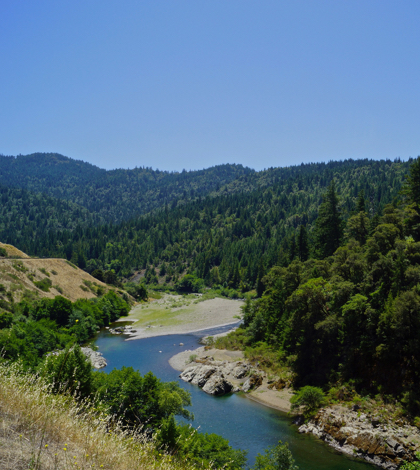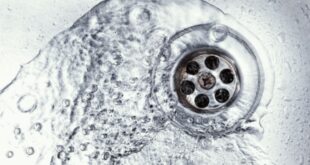According to Patrick Vaughan, engineering geologist with the California Department of Parks and Recreation, the removal of Benbow Dam is on schedule and should be completed sometime in October.
“The work is proceeding normally,” said Vaughan. “We’re about one-third of the way done with concrete removal of the dam.”
According to the National Oceanic and Atmospheric Administration (NOAA), the removal of Benbow Dam is the second largest dam removal in California’s history. The dam, on the south fork of the Eel River, was built in 1931 by the nine children of Arthur Benbow and belonged to Benbow Power Co. It supplied hydroelectric power to both Garberville and the Benbow Inn. It was sold to Pacific Gas and Electric Co. in 1943 but was resold back to the Benbow family 15 years later before being donated to the California State Parks a few years after that.
The dam has formed Benbow Lake, a tourist attraction for the last 50 years for swimming and boating. But the dam has limited access to the upstream habitat used by Chinook salmon, coho salmon and steelhead, during the winter months. Though the South Fork of the Eel River was one rich with these fish and other species of anadromous fish – those who migrate from the sea up into fresh water to spawn – these species have steadily declined due to the high amount of silt carried into the river by logging activity and road construction. The silt has filled stream pools and caused higher turbidity, which has harmed the fish. The dam also prevents water, sediment and wood from trees from flowing downstream naturally; the quality of the natural habitat has been reduced due to a lack of natural river flow.
The South Fork Eel was once known as “most productive sub-basin for anadromous fish” and is said to be the last habitat in the State of California for wild coho. According to NOAA, before the dam was built roughly 20,000 Chinook salmon and some 17,000 coho salmon swam past what became the dam site. Estimates from 2010 indicate there were only 1,000 Chinook and 50 coho in the South Fork Eel.
NOAA and the California Parks began removal of the dam in early August though preliminary work began in July. When completed, the dam removal will improve the nearly 50-mile route of high-quality and early-life habitat for the recovery of salmon, steelhead and other anadromous fish.
The dam is also plagued with safety issues which have occurred due to an unnatural wave action caused by both the lake and the sediment build-up. The redwood trees surrounding the lake are toppling over due to erosion resulting in unstable banks. Once the dam removal is complete, the California Conservation Corps will plant native vegetation along the banks to help control any further erosion.
Vaughan says, “We are about halfway through the entire project, though the work season includes site preparation, removal of ancillary structures and restoration of access roads at the end of it. The only problem we’ve run into is some difficulty in dewatering a deeper scour hole in the bedrock. We will return to finish this site … when the groundwater is lower and the site logistics are better for controlling the flow.”
 California Water News Daily Your Source For Water News in California
California Water News Daily Your Source For Water News in California


